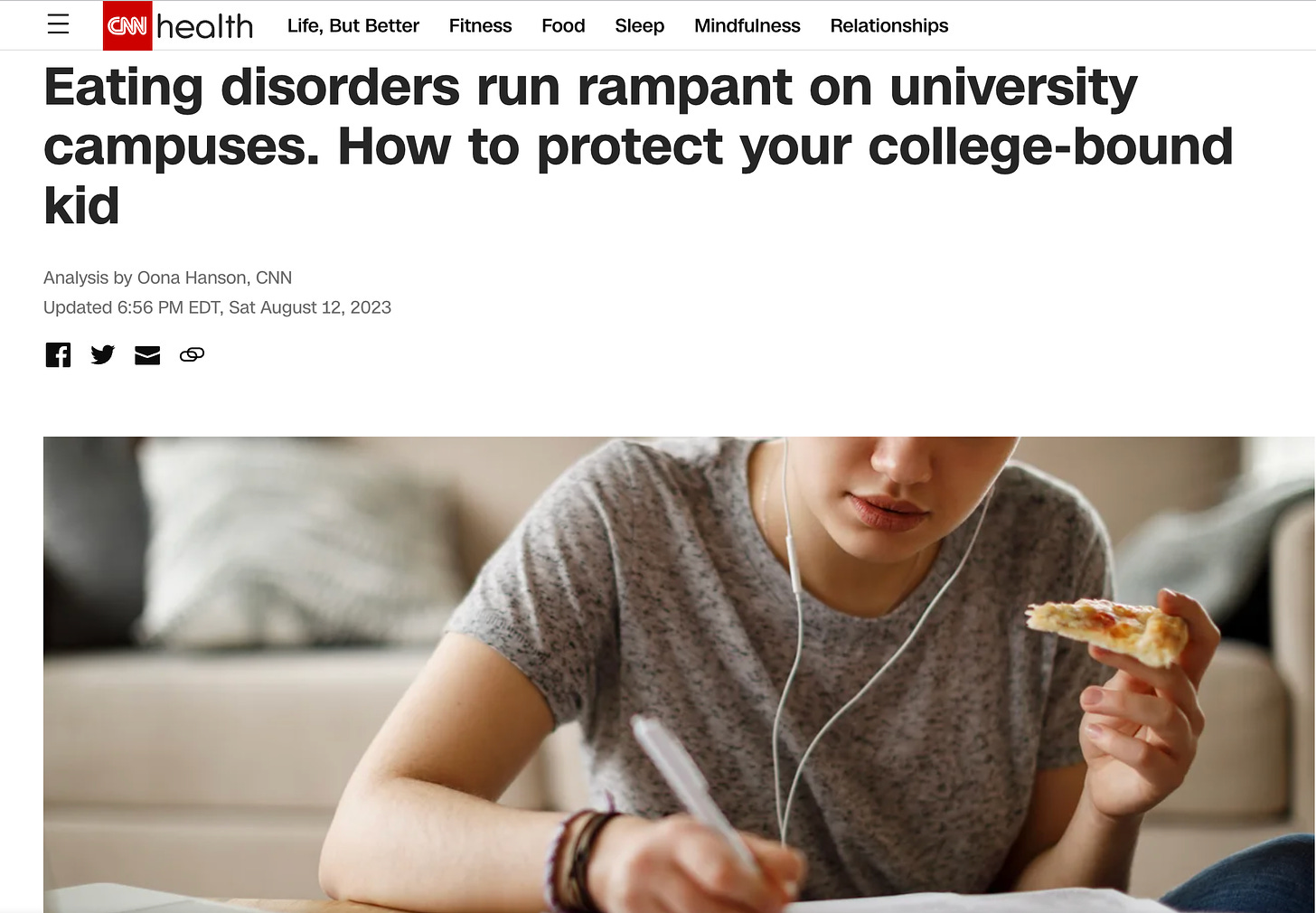Can you eating disorder-proof your college freshman?
What parents need to know about this high-risk transition
Although eating disorders can affect people of any age, the college years are a peak time for onset and relapse. This spike in illness during the late teens and early twenties likely stems from a range of contributing factors, including appearance pressures, increased vulnerability to common co-occurring conditions (such as depression and anxiety), the stressors of college life, and a lack of consistent access to food.
Throw in a pandemic, TikTok, and weight-loss-drugs-for-all, and the perfect storm has never been stormier.
Despite being at such high risk for eating disorders, college students are bombarded with fear-mongering about the so-called “Freshman Fifteen.”
Other than the pressure on brides to “diet down” for their wedding and on mothers to “bounce back” after pregnancy, there is no other discrete phase of life with such explicit and relentless messages about trying to control your body size.1
Rather than offer students protective support and information, however, our culture does the opposite: we prime the pump of disordered eating and body shame.
It doesn’t have to be this way.
What if, instead, we helped prepare young adults to understand the dangers of disordered eating and prepared them with the critical thinking skills so they’d be more resilient in the face of harmful but seductive messages from diet culture?
What if we saw negative body image as the serious health threat it is and didn’t dismiss it as an accepted norm of adolescence?
What if more families had the tools to talk about food and body issues?
What if more people knew to recognize weight loss, restrictive eating, and excessive exercise as eating disorder warning signs rather than as something to be praised?
We may not be able to inoculate college kids against eating disorders the way we do for meningitis, but we can lower the risk.
When should you start trying to protect your college kid from an eating disorder? It’s a bit like the ideal time for planting a tree: the best time was years ago; the second best time is now.
So even if you don’t have a lot of runway before your child leaves home—or if they’ve already left—there are still things you can do. In this analysis for CNN, I share some tips for parents and guardians.
If you have comments or questions, I’d love to hear them.
And before wrapping up, I want to call out that both stock images here are of what appear to be thin female students. Yes, I personally chose the image at the top. After some searching, I wasn’t able to find something that did a better job of capturing that vulnerable moment of sending your baby out into the world. (The fact that it’s easier to find photos like this of thin, white women could be its own topic for discussion.)
Despite what these two images might convey, I want to reiterate that people of all genders, body sizes, and racial identities get eating disorders.
Raising awareness about these illnesses—including how to prevent them and spot them early—will reduce so much suffering. Because this next generation has enough headwinds to contend with. They deserve to navigate the next phase of life feeling nourished, accepted, and loved.
I’m well aware that people approaching menopause also face an intense period (no pun intended) of body scrutiny and harmful messages about trying to prevent weight gain. It’s no wonder we see a spike in eating disorders in midlife, too. But there isn’t (at least not yet) the same kind of time-bound public body policing I see in these other stages of life.






